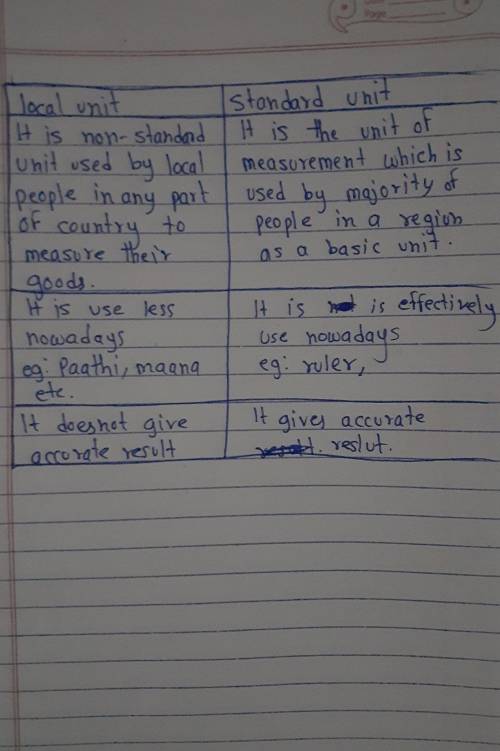
Biology, 06.09.2021 16:20 animaljamissofab
लख। b. Write any two differences between local and standard units of measurement. (स्थानीय र प्रमाणिक नाप उकाई बिच २ ओटा भिन्नता लेख।) Y 3.

Answers: 2


Other questions on the subject: Biology

Biology, 22.06.2019 03:00, sophiav9780
Where does all the water go? according to the environmental protection agency (epa), in a typical wetland environment, 39% of the water is outflow; 46% is seepage; 7% evaporates; and 8% remains as water volume in the ecosystem (reference: united states environmental protection agency case studies report 832-r-93-005). chloride compounds as residuals from residential areas are a problem for wetlands. suppose that in a particular wetland environment the following concentrations (mg/l) of chloride compounds were found: outflow, 60.4; seepage, 73.7; remaining due to evaporation, 26.4; in the water volume, 46.8. (a) compute the weighted average of chlorine compound concentration (mg/l) for this ecological system. (round your answer to one decimal place.) mg/l (b) suppose the epa has established an average chlorine compound concentration target of no more than 58 mg/l. does this wetlands system meet the target standard for chlorine compound concentration? yes. the average chlorine compound concentration (mg/l) is too high. yes. the average chlorine compound concentration (mg/l) is lower than the target. no. the average chlorine compound concentration (mg/l) is lower than the target. no. the average chlorine compound concentration (mg/l) is too high.
Answers: 3

Biology, 22.06.2019 09:30, katiebotts18
The “ecological footprint” left by a citizen of a developed nation is about four times larger than that left by a citizen of a developing nation. why is this the case?
Answers: 1


Biology, 22.06.2019 22:30, amm2795
Baroreceptors in the aortic arch and carotid bodies are mechanoreceptors that respond to the stretch that occurs in these arterial walls with changes in blood pressure. if pressure changes rapidly, the baroreceptors initiate a feedback mechanism that reduces blood pressure; however, if pressure changes slowly, as in developing hypertension, the receptors do not respond. given this information, the baroreceptors are most likely which type of receptor?
Answers: 3
You know the right answer?
लख। b. Write any two differences between local and standard units of measurement. (स्थानीय र प्रमाणि...
Questions in other subjects:

History, 10.03.2021 21:50



Biology, 10.03.2021 21:50


Social Studies, 10.03.2021 21:50


Mathematics, 10.03.2021 21:50

English, 10.03.2021 21:50




